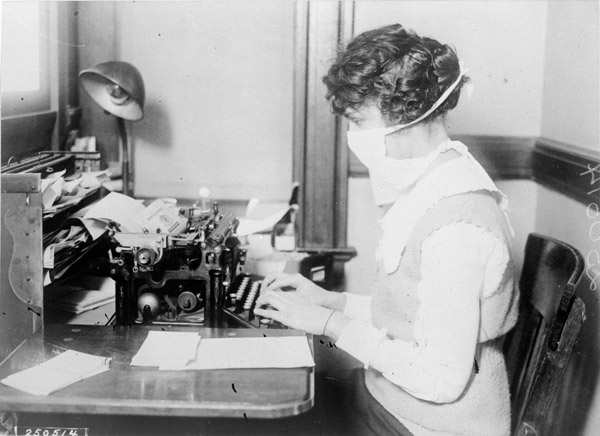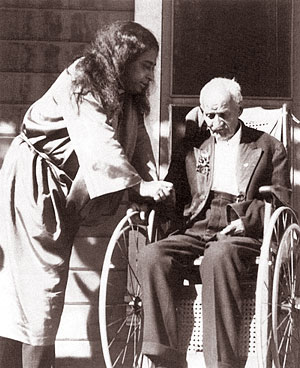I recently put up a post about transient electronics. Here’s a DARPA video demonstrating such technology dissolving when treated with a few drops of water. From the release: “DARPA hopes this advance will lead to biodegradable medical treatments for remote patient care that does not require extraction surgery while warfighters are deployed.”
A lot of people died unnecessarily because of Richard Nixon’s policies, but you have to say one thing for him: At least he never stabbed his wife. From “The Genius,” Norman Mailer’s 1972 New York Review of Books account of the 37th American President, who was always trying to shed the discomfort he felt with his own skin:
“He walks like a puppet more curious than most human beings, for all the strings are pulled by a hand within his own head, an inquiring hand which never pulls the same string in quite the same way as the previous time—it is always trying something out—and so the movements of his arms and legs while superficially conventional, even highly restrained, are all impregnated with attempts, still timid—after all these years!—to express attitudes and emotions with his body. But he handles his body like an adolescent suffering excruciations of self-consciousness with every move. After all these years! It is as if his incredible facility of brain which manages to capture every contradiction in every question put to him, and never fails to reply with the maximum of advantage for himself in a language which is resolutely without experiment, is, facile and incredible brain, off on a journey of inquiry into the stubborn refusal of the body to obey it.
He must be obsessed with the powers he could employ if his body could also function intimately as an instrument of his will, as intimate perhaps as his intelligence (which has become so free of the distortions of serious moral motivation), but his body refuses. Like a recalcitrant hound, it refuses. So he is still trying out a half dozen separate gestures with each step, a turn of his neck to say one thing, a folding of his wrist to show another, a sprightly step up with one leg, a hint of a drag with the other, and all the movements are immediately restrained, pulled back to zero revelation as quickly as possible by a brain which is more afraid of what the body will reveal than of what it can discover by just once making an authentic move which gets authentic audience response. Yet he remains divided on the utility of this project. Stubborn as an animal, the body does not give up and keeps making its disjunctive moves while the will almost as quickly snaps them back.”
Tags: Norman Mailer, Richard M. Nixon
A promo film for the Urbee, a cleaner, striking, printable auto.
From a recent Atlantic article by Ross Andersen about video artist Jason Silva, a passage recalling a meeting between Marshall McLuhan and Timothy Leary, when the latter was imprisoned:
When Timothy Leary was in prison he was visited by Marshall McLuhan, who told Leary “you can’t stay way out on the fringes if you want to compete in the marketplace of ideas—if your ideas are going to resonate, you need to refine your packaging.” And so they taught Leary to smile, and they taught him about charisma and aesthetic packaging, and ultimately Leary came to appreciate the power of media packaging for his work. According to the article, this is where Timothy Leary the performance philosopher was born, and when he came out of jail all of the sudden he was on all these talk shows, and he was waxing philosophical about virtual reality, and downloading our minds, and moving into cyberspace. All of these ideas became associated with this extremely charismatic guy who was considered equal parts rock star, poet and guru scientist—and that to me suggests the true power of media communications, because these guys were able to take these intergalactic sized ideas and spread them with the tools of media.•
· · ·
Leary in Folsom prison, 1978:
A sample of Silva’s work:
Tags: Jason Silva, Marshall McLuhan, Ross Andersen, Timothy Leary
From an Ask Me Anything at Slashdot with Steve Wozniak, an exchange about improving American education:
“Question:
Woz, what changes would you recommend to fix the K-12 education system in the U.S.?
Steve Wozniak:
Computers offered a real change in the tools of the classroom, but they don’t seem to have changed much. The learning is the same, only done via computers, for the most part. I had hoped for more.
I do want to feel a part of the big improvement someday, so I hope that there is some further step with computers. That would be when a computer becomes conscious and caring and becomes the best friend that each student wants to be with. It will look at their faces and speak the way that particular student likes and be a good friend more than a teacher.
One thing that has not changed over time in education is that we all, in a class, get the same material presentation together. The same pages as everyone else on Monday, the same pages on Tuesday, etc. Individuals as we are, we have different lapses along the way. A teacher could back up and explain something to fill in a gap, but each of the 30 students has different ‘gaps.’ The solution will be the equivalent of one teacher per student.
This opens the door to a student choosing to get only straight A’s, and only studying subjects they want to. And there will be more room to teach thinking and creativity and not all the same answer, which is not even their own answer, but out of a book. It’s a brave step, but right.
I learned the capital cities of all 50 states. How could anyone in life ever need to know such a worthless thing. The only worth is to show you can memorize it. But today it gets turned into a grade and a determination of what intelligence is. We have to break from that paradigm but can’t with today’s 30-student classes. Or should I say ‘day care?’
Schools are short of money because students don’t get a vote and votes turn into money. It’s a bad consequence of finding education to be a right and that means it has to be supplied by government. Government money follows votes. A family of 5 gets no more votes than a family of 2. Which wants the better school? But the votes by families of 2 are against more money for schools.”
Tags: Steve Wozniak

“He had big, muscular fingers, and he snapped them with a sound like the crack of a black snake whip.”
Prior to antibiotics and penicillin, lesser methods were used to treat a raft of ailments–including, um, finger snapping. From the December 19, 1896 Brooklyn Daily Eagle:
“A friend who was born in Central Illinois asked me the other day whether I have ever heard of the snapping craze that raged in the back country districts in his part of the state some thirty odd years ago. I have inhabited this planet for a little over half a century and have always been interested in popular delusions, but I had never before heard of the snappers. My friend said that a snapping doctor, who came from nobody knew where, started a curious movement by lectures in rural schoolhouses and churches. His theory was that all diseases could be thrown off by bringing the body up to a condition of high nervous tension by a peculiar method of snapping the fingers, which he had discovered and which he alone was competent to teach. He had big, muscular fingers, and he snapped them with a sound like the crack of a black snake whip. He soon got his audiences to work snapping and made them believe that they were experiencing marked benefits from the performance. For complete instruction in the art, however, he charged $50.
The craze had a run of a few months, and while it raged the school children snapped their fingers at recess time, and in the farmhouses men and women gathered evenings to practice the marvelous new healing art.”
From “How to Make Almost Anything,” Neil Gershenfeld’s new Foreign Affairs piece about the coming revolution of 3D printers, replicating machines that can replicate even themselves:
“Are there dangers to this sort of technology? In 1986, the engineer Eric Drexler, whose doctoral thesis at MIT was the first in molecular nanotechnology, wrote about what he called ‘gray goo,’ a doomsday scenario in which a self-reproducing system multiplies out of control, spreads over the earth, and consumes all its resources. In 2000, Bill Joy, a computing pioneer, wrote in Wired magazine about the threat of extremists building self-reproducing weapons of mass destruction. He concluded that there are some areas of research that humans should not pursue. In 2003, a worried Prince Charles asked the Royal Society, the United Kingdom’s fellowship of eminent scientists, to assess the risks of nanotechnology and self-replicating systems.
Although alarming, Drexler’s scenario does not apply to the self-reproducing assemblers that are now under development: these require an external source of power and the input of nonnatural materials. Although biological warfare is a serious concern, it is not a new one; there has been an arms race in biology going on since the dawn of evolution.
A more immediate threat is that digital fabrication could be used to produce weapons of individual destruction. An amateur gunsmith has already used a 3-D printer to make the lower receiver of a semiautomatic rifle, the AR-15. This heavily regulated part holds the bullets and carries the gun’s serial number. A German hacker made 3-D copies of tightly controlled police handcuff keys. Two of my own students, Will Langford and Matt Keeter, made master keys, without access to the originals, for luggage padlocks approved by the U.S. Transportation Security Administration. They x-rayed the locks with a CT scanner in our lab, used the data to build a 3-D computer model of the locks, worked out what the master key was, and then produced working keys with three different processes: numerically controlled milling, 3-D printing, and molding and casting.
These kinds of anecdotes have led to calls to regulate 3-D printers.” (Thanks Browser.)
Tags: Bill Joy, Eric Drexle, Neil Gershenfeld
Imagine fleets of driverless cars bringing groceries to your door or automatic taxicabs shuttling you to and fro. Human ownership and operation of vehicles won’t die quickly, but more and more services will be handled by people-less vehicles. John Naughton’s new Guardian piece addresses the job-killing advent of the driverless cars, though in the long run the invention will create a healthier, wealthier lifestyle:
“At the ceremony in Mountain View, Google’s co-founder, Sergey Brin,announced the company’s intention to bring autonomous vehicles to the market in five years. In a pre-emptive attack on critics, he pointed out that autonomous vehicles would be significantly safer than human-controlled ones. That seems plausible to me: 40,000 people are killed every year in road accidents in the US and many, if not most, of those are caused by human error. ‘This has the power to change lives,’ Brin said. ‘Too many people are underserved by the current transport system. They are blind, or too young to drive, or too old, or intoxicated.’ He also argued that manual operation of cars was inefficient: autonomous vehicles could make better use of the road and reduce the size of car parks by fitting into smaller areas than humans could get them into.
Ignore the evangelism for a moment and think about what Google has achieved. Its engineers have demonstrated that with smart software and an array of sensors, a machine can perform a task of sophistication and complexity most of us assumed would always require the capabilities of humans. And that means our assumptions about what machines can and cannot do are urgently in need of updating.”
Tags: John Naughton, Sergey Brin
From a 1975 “Talk of the Town” piece in the New Yorker by Anthony Hiss about a trip to Los Angeles, a passage detailing his audience with Philip K. Dick, who wasn’t fully appreciated during his abbreviated lifetime (or in this brief article):
In the afternoon, we drove over to Fullerton to see Philip K. Dick, my favorite science-fiction writer, author of 33 novels and 170 short stories. Past the House of Egg Roll, past Moy’s Coffee Shop (Chop Suey, Hot Cakes), past Bowser Beautiful, through Bel Air. We drove to the end of Sunset Boulevard, where we saw seagulls, 18 surfers in wet suits, a blue suggestion of Catalina to the southwest, and an Indian girl in a green-and-gold sari on the beach. Then south, past a concrete wall painted ‘TOMMY SURKO SAYS FOR MY KIND OF GIRL THERE’S ONLY ONE! TOMMY SURKO!’ Behind the tall palms on Venice we could see snow on the mountains. Kids were skateboarding down a hill on Lincoln. Past Woody’s Smorgasburger, onto a freeway to Fullerton.
Philip K. Dick lives in an apartment full of books and records and photographs with his wife, Tessa; his small son, Christopher; and two cats, Harvey Wallbanger and Sasha. He is jolly and tubby and bearded. His books, which are hilarious, are popular in France, because the French think they are about how grim everything is. Dick showed us a French newspaper piece about him—the subtitles were “Le Chaos,” “L’Acide,” “Le Suicide,” “Les Machines” “La Société Totalitaire,” “La Paranoïa.” Dick has just finished a book about Tim Leary and the LSD crowd, and what happened to them.
We had stopped in to make a short call of homage, and wound up talking along for hours, drinking wine, and Tessa going out for some Chinese food, and then talking about cosmologies until it was almost time for our plane back to N.Y. The apartment also contains a two-foot-high metal rocket ship on a wooden base—this is his Hugo Award, the highest award in science fiction. The plaque is missing, though, because Dick once used the award to break up a fight. ‘It grabs good,’ he says. As for the cosmologies, this is what emerged from our discussions: cosmologies all seem to be based on repetition—you know, first the universe expands, then it contracts, then it expands again, etc.—but maybe that’s not so. Maybe this whole expansion business that the universe is currently embarked upon is going to happen only once. That would mean that every day really is a new day, right? Also, maybe it’s not true that Einstein was smarter than Newton. Maybe Newton’s laws accurately described the universe as it then existed. But since then it’s expanded and got more complicated, and can be accurately described only by Einstein physics. Which will eventually become outdated, maybe.”•
Tags: Anthony Hiss, Philip K. Dick
I am SELLING ALL of My Girlfriends CLOTHES!! – $250 (Co-op City)
These clothes were lovingly cared for by a GREEDY LIAR who CHEATS and Breaks Hearts.I’m sure it’s all worth thousands but I am only charging for my time GETTING RID of it.
All of these clothes were purchased between 2008 (when we moved in together) and a few months ago (when we broke up).
This is a lot of stuff. I put it into 5 large contractor bags before I decided to sell it.
There are:
- 40 or 50 pairs of shoes Mostly size 9 (a few 8 1/2 and 9 1/2)
- I counted 60 pairs of pants- Size 9/10 (12 pairs of different jeans)
- There are so many shirts, tops, blouses, skirts and stuff (pocketbooks and stuff) that I’m not counting that stuff.
I don’t understand women’s sizes but I will answer any questions you have.
The argument over health care reform should never have been about if the U.S. should have universal coverage but how best to limit waste and provide excellent service. That might have happened if conservative opportunists hadn’t sought political advantage in roiling Birther bigotry as a way to take down a President who was using policies suggested by the Heritage Foundation (e.g., individual mandate). These conservative do not want smaller government; they just want power. From “The Conservative Case for Obamacare,” by J.D. Kleinke in the New York Times:
“The core drivers of the health care act are market principles formulated by conservative economists, designed to correct structural flaws in our health insurance system — principles originally embraced by Republicans as a market alternative to the Clinton plan in the early 1990s. The president’s program extends the current health care system — mostly employer-based coverage, administered by commercial health insurers, with care delivered by fee-for-service doctors and hospitals — by removing the biggest obstacles to that system’s functioning like a competitive marketplace.
Chief among these obstacles are market limitations imposed by the problematic nature of health insurance, which requires that younger, healthier people subsidize older, sicker ones. Because such participation is often expensive and always voluntary, millions have simply opted out, a risky bet emboldened by the 24/7 presence of the heavily subsidized emergency room down the street. The health care law forcibly repatriates these gamblers, along with those who cannot afford to participate in a market that ultimately cross-subsidizes their medical misfortunes anyway, when they get sick and show up in that E.R. And it outlaws discrimination against those who want to participate but cannot because of their medical histories. Put aside the considerable legislative detritus of the act, and its aim is clear: to rationalize a dysfunctional health insurance marketplace.
This explains why the health insurance industry has been quietly supporting the plan all along. It levels the playing field and expands the potential market by tens of millions of new customers.”
Tags: J.D. Kleinke
Umbraphiles, or sun worshippers, are apparently growing in numbers, perhaps because we are starstuff ourselves. Solar eclipses, infrequent though they are, have recently spawned a healthy tourist industry. From Martin Ince in the Financial Times:
“Tour operators report a surge in interest in eclipse viewing, sparked by the ‘eclipse of the century’ in July 2009. It was visible across large parts of India and China and lasted six minutes 39 seconds – the longest eclipse until 2132. It filled every hotel in the Yangtze Delta region, where over 30,000 eclipse watchers based themselves, and brought an extra 7,000 foreign tourists to Shanghai, mostly from the US and Japan. China Daily reported at the time that about 80 special flights were staged to allow passengers to see the eclipse even if clouds threatened: a good move, as it rained in Shanghai.
‘We’re finding this sort of holiday to be hugely popular since the China eclipse, and the trend continued for Easter Island the following year,’ says Simon Grove, head of product at the tour operator Explore. ‘I think the appeal of astronomical tourism in general has increased in recent years too. Last year’s spectacular Northern Lights helped to fuel interest that those well-publicised eclipses had ignited.’
Part of the joy of this hobby is that the moon’s shadow can fall anywhere on the earth’s surface. This means eclipse-chasing needs careful planning, but also that eclipse-lovers end up in places they would never visit otherwise, including Easter Island and the Antarctic in the past few years. This year’s eclipse will take me to Palm Cove, Queensland; the six others I have witnessed were in locations as diverse as the Greek islands, Siberia, and a tiny power station village in rural China.”
••••••••••
The “eclipse of the century,” 2009:
Tags: Martin Ince
From the June 4, 1891 Brooklyn Daily Eagle:
“A man was found Tuesday afternoon in an outhouse at Bethpage, L.I. almost dead from exhaustion. He had been there for three days and could not get out because he lacked physical strength. No one in the vicinity knew him. He was taken to a private house and a doctor was summoned from Farmingdale, but before he arrived the strange man was dead. The cause of death has not been determined, but there are no indications of foul play.”
Some search-engine keyphrases bringing traffic to Afflictor:
- Even more proof that Donald Trump is a moron.
- Old Print Articles: Illinois boy sweats blood (1881) + New typewriter described in excruciating detail (1867).
- Classic Photograph: Luther Burbank, with Spineless Cactus (1908).
- Featured Videos: James Day interviews Ayn Rand (1974) + A paper robot that walks + Andrew McAfee addresses the robotization of labor + William F. Buckley meets Black Panther Huey P. Newton (1973) + Cher and Andy Kaufman in the Garden of Eden (1979) + Andy Williams and Claudine Longet welcome the Osmonds + Tom Wolfe’s Marshall McLuhan documentary (1984).
- Recently Posted on NYC’s Craigslist: I bring joy to people by reminding them of crippling disease and injury + I will get rid of the rodents in your home, and then you will give me your home + I may be overvaluing my soul by $1,967,000.
- 5 American novels that David Foster Wallace really loved.
- No one should ever eat at Wendy’s.
- An Obama victory could bring the GOP back to the center.
- Was the first Ali-Frazier fight the greatest night ever n NYC?
- Fleets of driverless taxis may develop from automatic cars.
- Economist John Quiggin wonders if we’ll embrace a toil-free world.
- Geneticist George Church sees synthetic biology becoming popular.
- Replacement refs weren’t the biggest problem with the NFL.
- Dr. Rich Terrile of NASA thinks machines will “awaken,” take over.
- Transient medical electronics can dissolve inside your body.
- Megan Garber presents a brief history of mechanical horses.
- Tesla Motors announces its first six Supercharger stations.
- Mostly bad news and some good news for electric cars.
- Young males may not be the best soldiers in the tech age.
- Private sector space programs may or my not be a good thing.
- Innovative Chinese builder Zhang Yue profiled in Wired.
- Optogenics may be effective in behavioral modification.
- Jimmy Breslin’s great 1963 profile of JFK’s gravedigger.
- Attempts are being made to repopularize airships.
- Kevin Kelly reveals his favorite scientific explanation.
- An analysis of economic systems based on debt creation.
- Our fears about pandemics sometimes confuse our judgement.
- A note from 1854 about a missing farmer.
- A brief note from 1887 about Dr. Leach’s eye.
- This week’s Afflictor keyphrase searches.
The opening of a really smart Aeon essay by economist John Quiggin, who wonders whether we will embrace a world free of toil:
“I first became an economist in the early 1970s, at a time when revolutionary change still seemed like an imminent possibility and when utopian ideas were everywhere, exemplified by the Situationist slogan of 1968: ‘Be realistic. Demand the impossible.’ Preferring to think in terms of the possible I was much influenced by an essay called ‘Economic Possibilities for our Grandchildren,’ written in 1930 by John Maynard Keynes, the great economist whose ideas still dominated economic policy making at the time.
Like the rest of Keynes’s work, the essay ceased to be discussed very much during the decades of free-market liberalism that led up to the global financial crisis of 2007 and the ensuing depression, through which most of the developed world is still struggling. And, also like the rest of Keynes’s work, this essay has enjoyed a revival of interest in recent years, promoted most notably by the Keynes biographer Robert Skidelsky and his son Edward.
The Skidelskys have revived Keynes’s case for leisure, in the sense of time free to use as we please, as opposed to idleness. As they point out, their argument draws on a tradition that goes back to the ancients. But Keynes offered something quite new: the idea that leisure could be an option for all, not merely for an aristocratic minority.” (Thanks Browser.)
Tags: Edward Skidelsky, John Maynard Keynes, John Quiggin, Robert Skidelsky
As technology is increasingly used to do war’s dirty work, will military continue to be made up mostly of young males? From Rosa Brooks’ Foreign Policy argument for rethinking recruitment in the Information Age:
“For most of human history, having an army full of young men made lots of sense. As soldiers, young males have had two things going for them, historically speaking. First, they’re usually stronger, on average, than any other demographic group: they can run fast and carry heavy loads. Second, they’re (relatively) biologically expendable from a species-survival perspective: women of child-bearing age are the limiting factor in population growth. A society can lose a lot of young men without a devastating impact on overall population growth.
Today, though, these characteristics don’t matter as much as they once did. Overall birthrates are much lower in modern societies than they were during earlier periods, but life expectancy is much longer. Early societies worried about sustaining their populations; today we worry less about ensuring population growth than about overburdening the planet’s load-bearing capacity.
Simple brawn also offers far less advantage in our high-tech age. In modern warfare, brutal hand-to-hand combat is no longer the norm, and warfare is no longer a matter of sending out wave after wave of troops to overwhelm the enemy through sheer mass. Increasingly, modern warfare involves a mixture of high-tech skills and low-tech cultural knowledge rather than ‘fighting’ in the traditional sense.
In fact, if the next few decades are anything like the last, most military personnel will never see combat.”
Tags: Rosa Brooks
The introduction to Megan Garber’s excellent history of mechanical horses in the Atlantic:
“For most of human history, horses have been, primarily, a technology. An intimate technology, yes — people named their horses, and groomed them, and sometimes loved them — but horses were, for the most part, tools: They helped humanity to get around and get things done. Once steam power and internal combustion came along, though, that relationship changed drastically. As horses were eclipsed by more efficient methods of moving people and things — trains, cars, planes — their role in human culture shifted, as well. We quickly came to see horses more as what they had been, of course, all along: fellow animals.
That shift is evident in a longstanding dream that is a little bit fanciful, a little bit practical, a little bit silly, and a little bit wonderful: the quest for the mechanical horse. While some creations — theScammel mechanical horse, the Iron Horse — imagined themselves as horses’ mechanized successors while not actually resembling them, many others have engaged in biomimicry of a more specific variety. While they are only one species we humans have seen fit to imitate with our machines — the world now hosts, among other automatons, the mechanical dog, the mechanical dinosaur, the mechanical pack mule, the mechanical elephant, the mechanical flea, and the mechanical shark — horses have held a special place in human hearts.”
Tags: Megan Garber
An 19th-century Illinois lad was often mysteriously soaked in his own blood, as evidenced by an article that ran in the January 27, 1881 Brooklyn Daily Eagle. An excerpt:
“Chicago–A boy named Willie Crawford is suffering from a strange disease, the most extraordinary feature of which is that he sweats blood. The boy’s parents live at 86 Seeley Avenue. He was born December 1, 1866, and hence is a little over fourteen years of age. Up to seven years ago last summer he was healthy. He played hard, ate heartily and slept soundly. One night he woke up and called his mother, and she found him bleeding at the nose. She could not stop it, so she called a doctor, who said, ‘it was nothing but a bad nose bleed. Put cold cloths on his back.’ This was done but without avail, and another doctor was called. The bleeding at the nose was stopped, and then there came out on his body great black patches, and they would bleed. Blood also flowed from his mouth and eyes and from his stomach, and upon one occasion from his bladder and kidneys.
Willie recovered from the first attack and became apparently as well as ever, but others soon followed, and he was constantly under the care of different physicians. Bleeding from all parts of the body was the principal thing noticeable. It made him very weak, and the blood from his mouth affected his taste so that he could not partake of nourishment without great difficulty. On some occasions blood would issue in small drops about the size of a pin head from, as it seemed, every pore in his body and would stain his clothing, just as though blood had been pricked into the cloth. These discharges were unaccompanied with pains, and, until the last attacks were without much fever. Spots of all shapes and sizes would appear upon all parts of his body and would turn as black as coal sometimes, and at others would be of red or blue color.
Three weeks ago to-day he was taken down suddenly with the worst attack he has ever had. He bled so much that his blood became so thin and reduced in quality that it would scarcely soil a white handkerchief. He also had a high fever and bled so badly from his nose that it had to be constantly plugged. His gums, mouth and tongue were covered with large blood blisters, and the whites of his eyes were bloodshot, and it seemed as though he could not live, he had become so weak. These attacks, though they have come without any apparent cause or warning, have sometimes been produced and stopped by sudden excitement. Mrs. Crawford said he was once bleeding so badly that she went for a doctor, and left him with the hired girl and one of her daughters. As she was coming back, Willie met her with the bleeding stopped, though he was deadly pale, as he said, ‘Bridget has fainted, and Maggie is almost scared to death.’ He was so frightened at the fainting of the hired girl that it had for the time cured him.
Willie Crawford is mentally bright, and his father, mother, brother and sister are strong and healthy. The physicians who have taken an interest in his case propose sending him to Edinburgh and London for examination by the Academy of Surgeons.”
Tags: Mrs. Crawford, Willie Crawford
Fun 1984 doc about McLuhan that was scripted and “hosted” by Tom Wolfe.
See also:
Tags: Marshall McLuhan, Tom Wolfe
Drag Queen needs Wheel Chair!
I have a performance coming up soon (Oct 13th) and need a wheelchair for a number I am doing.
Ideally, I would love to just BORROW a cheap (non-motorized) wheelchair if someone can lend me one.
I can even possibly kick a few bucks your way as a thank you.
Borrowing your wheelchair will help me bring joy to many in a really unique performance that will be seen by hundreds.
(No, it’s not a performance I’m being paid for, which is why I don’t have a budget to buy a wheelchair.)
Thanks for any help!
Brad Templeton considers a potential use for the coming robotic autos: “whistlecars,” which can deliver themselves to you for a small fee whenever you need to drive someplace. It’s the taxi without the taxi driver, and the vehicle can return itself. An excerpt:
“Many of the big changes that will come about form robocars will come from how they free car designers from the constraints of human-driven cars which are the owner’s sole, or almost-sole vehicle.
Much of this depends on this yet-untested idea:
- If one can hire a cheap specialized ‘robotaxi’ (or whistlecar) on demand when one has a special automotive need, car users can elect to purchase a vehicle only for their most common needs, rather than trying to meet almost all of them — or to not purchase at all.
For example, for many, most trips are short, single passenger and do not require significant cargo room. Almost nobody purchases a vehicle good only for that purpose, because they want to cover the occasional needs for long trips, taking extra people, carrying cargo, towing or going off-road.
Some of these changes would also apply to what I’m calling ‘whistlecars’ — owned or rented cars that deliver themselves to you when you summon them, but which you still drive.” (Thanks Atlantic.)
Tags: Brad Templeton
The opening of a BBC piece by James Gallagher about “transient electronics,” which dissolve within the human body after serving a medical purpose:
“Ultra-thin electronics that dissolve inside the body have been devised by scientists in the US and could be used for a range of medical roles.
The devices can ‘melt away’ once their job is done, according to research published in the journal Science.
The technology has already been used to heat a wound to keep it free from infection by bacteria.
The components are made of silicon and magnesium oxide, and placed in a protective layer of silk.
It is part of a field termed ‘transient electronics’ and comes from researchers who have already developed ‘electronic tattoos’ – sensors that bend and stretch with the skin.”
Tags: James Gallagher



























